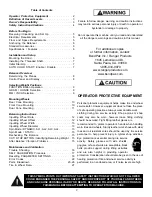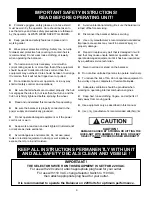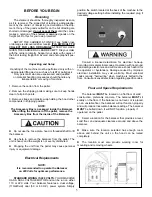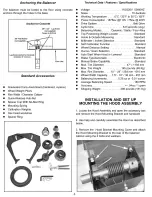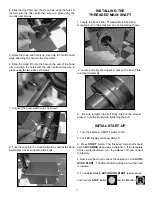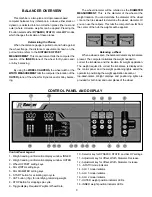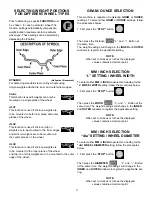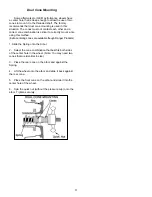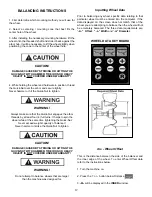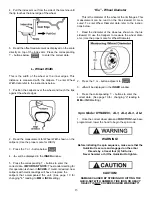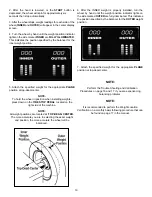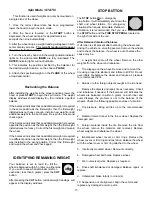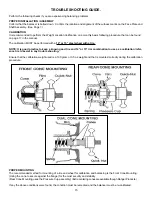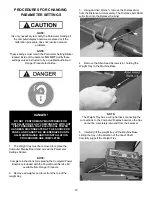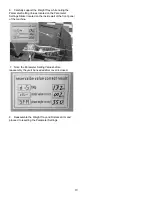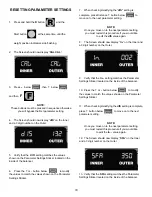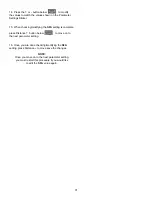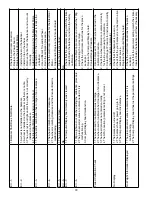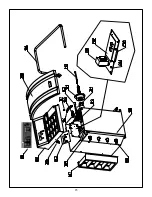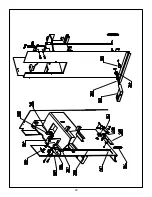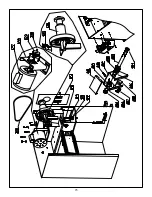
10
MOUNTING WHEELS
Select the most appropriate mounting method for the
wheel you are balancing. Using the proper method ensures
secure mounting, accurate displays and safe balancer
operation. It also prevents damage to the wheel. On most
wheels, the inner side of the wheel hub usually has the
most uniform surface for wheel balancing. Always center
the wheel by the most uniformly shaped side of the hub to
achieve the most accurate balance.
Regardless of mounting type, always make sure that the
wheel is forced firmly against the arbor faceplate and that
the Quick-Nut engages the threaded arbor for at least four
complete turns. To assist in centering the wheel properly,
rotate the wheel on the arbor while tightening the
Quick-Nut.
CAUTION!
DAMAGE CAUSED BY STRIKING OR HITTING THE
QUICK-NUT WITH HAMMER, TIRE IRON OR HEAVY
OBJECT IS NOT COVERED UNDER WARRANTY!
Rear Cone Mounting
Most original equipment and steel wheels can be
mounted properly using this method. The wheel is centered
on a cone from the inner side of the hub.
1. Place the cone spring on the arbor with the large end
towards the balancer.
2. Select the cone that best fits the center hole in the wheel.
Slide the cone onto the arbor with the large end towards
the spring.
3. Lift the wheel onto the arbor and center it on the cone.
4. Attach the pressure cup to the Quick-Nut and spin the
assembly onto the arbor. Tighten securely.
Front Cone Mounting
A wheel should be centered by the outer side of the
hub only when the inner surface will not provide an accurate
surface to center on.
1. Select the cone that best fits the center hole in the
wheel.
2. Lift the wheel onto the arbor and slide it back against
the arbor faceplate.
3. Slide the cone onto the arbor and into the center of the
wheel. Then lift the tire to seat the cone in the center hole.
4. Spin the Quick-Nut (without the pressure cup) onto the
arbor. Tighten it securely against the cone.


